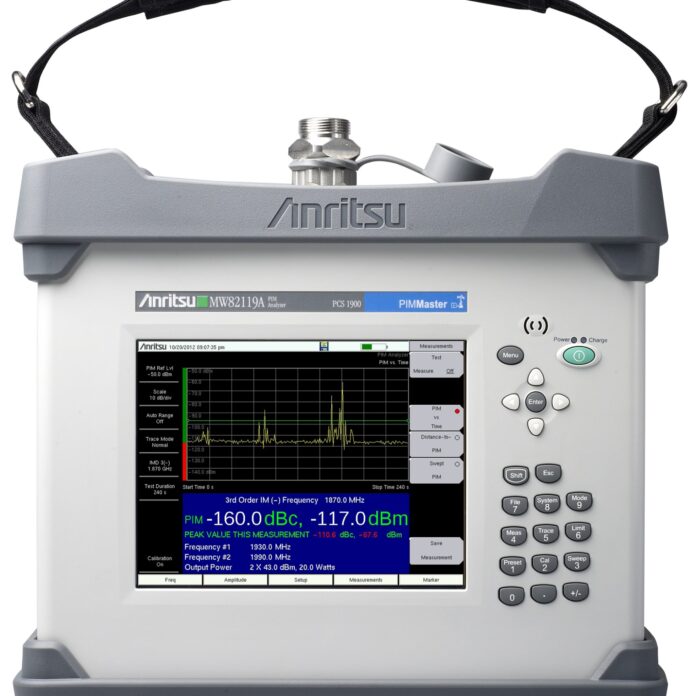PIM, or passive intermodulation, is a type of interference that has become increasingly important to detect and mitigate because LTE networks are particularly sensitive to it.
PIM Explained: what is PIM?
PIM is a form of signal interference, and it can be caused either by metal components or by two or more carriers sharing the same downlink path in a wireless network, which is becoming more common as wireless networks become more complex with multiple technologies and technology generations at a single site. The signals combine to generate undesired interference, which impacts the LTE signal. Antennas, cables, and dirty or loose connectors can be sources of PIM, and so can damaged RF equipment or metal objects near or at a distance from the cell site.
PIM interference can have substantial impacts on the performance of LTE, which is why it is so important to wireless operators and their contractors to be able to test for, locate and mitigate PIM. PIM levels around -100 decible-milliwatts (dBm) or less are generally considered good, but the lower the better – test company Anritsu said that drive tests have found an 18% drop in download speeds when PIM levels were increased from -125 dBm to -105 dBm, even though the latter number can be considered an acceptable PIM level.
When is PIM tested for?
Individual components are often tested for PIM both in the design and production processes in order to ensure that they are not significant PIM sources once they are installed – however, installation is still a critical piece of PIM mitigation because proper connections are necessary. In the case of distributed antenna systems, in some instances the system is tested for PIM as well as individual components. PIM-certified equipment is becoming more common. Antennas, for example, may be PIM-certified to a level of -140 dBm and those requirements are increasingly strict.
PIM is also assessed during the siting process for cellular sites, ideally before the cell site and antennas are placed as well as during the installation process.
What equipment is used to test PIM in the field?
A number of test companies offer specialized equipment in order to detect, pinpoint and subsequently address PIM sources. Some equipment options include:
Communications components PIM testers
One key feature of PIM testing in the field is that the testing must be done based on different frequency ranges. No single piece of PIM testing equipment can adequately assess PIM across a full range of frequencies, so PIM testing equipment is frequency-limited and comes in models that test specific frequencies.
Read more about PIM in this special report on LTE field testing from RCR Wireless News.

